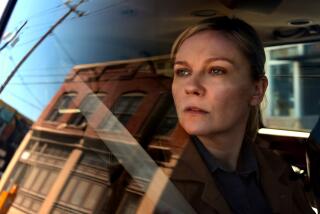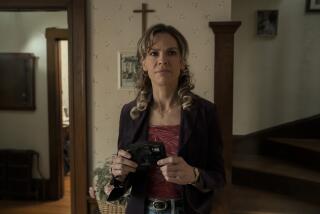From ‘The Big Sick’ to ‘Brigsby Bear,’ what does box office mean for indie movies these days?
This was a dire summer for the releases from the Hollywood studios, as seemingly sure-fire franchise and tentpole pictures disappointed at the box office one after the other. Within the independent space there were likewise shivers of anxiety and uncertainty, if for slightly different reasons.
Independent distribution has long been marked by consistent tides of turnover and renewal, as once-promising companies close up shop and new companies enter in their place. As well, the independent sector often acts as a kind of canary in the coal mine for changes in the broader industry, and the current conversations over video-on-demand and streaming services in relation to traditional theatrical release patterns is the latest iteration.
“The Big Sick” was the big success story of the summer by following a relatively traditional route of acquisition at the Sundance Film Festival through to an initial limited opening blossoming into a wide release and a box office take of now nearly $40 million.
Among other brighter spots at the box office: Focus Features’ “The Beguiled” brought in $10.6 million, Roadside Attractions’ “Beatriz at Dinner” feasted on $7 million, and the Weinstein Co.’s “Wind River” has been a late-summer sleeper with nearly $12 million so far (thanks, in part, to the company pushing the wintry thriller into 2,600 theaters last weekend).
Drilling down further, the older art house audience, attracted to more straightforward films such as “The Hero” or “Maudie” remains a reliable backbone, while the audience for edgier, youth-oriented movies like “Ingrid Goes West,” “Brigsby Bear” or “A Ghost Story” remains an elusive target to market to and successfully capture.
For their first movie as a distributor, Annapurna gambled big with the wide release of Kathryn Bigelow’s “Detroit” — a period film that might have appealed to older viewers combined with a hot-button topicality seemingly suited to the social media set — but saw mixed results at the box office and a brief blast of intense media attention. With a disappointing $16-million domestic gross so far, the hope turns to a possible resurrection during award season (à la Bigelow’s best picture winner, “The Hurt Locker”).
Another newcomer, Avrion Pictures, released the Halle Berry thriller “Kidnap” in wide release in early August and has so far made more than $27 million.
As always in talking about the state of independent film, one is forced to start with an attempt at simply defining the terms and parameters by which to have the conversation. The Indiewire website has been keeping a running list of the top-grossing independent films of the year, and the movie in the No. 1 spot is the shark attack survival adventure thriller “47 Meters Down,” which the new distributor Entertainment Studios opened in more than 2,400 theaters. The No. 2 spot is occupied by Luc Besson’s “Valerian and the City of a Thousand Planets,” released in more than 3,500 theaters by STX and boasting a budget estimated at $180 million.
Neither film on its surface fits most conventional ideas of what an independent film looks like, and yet by nature of financing and distribution that is what they most certainly are. Which may actually present the most accurate picture of the indie space right now — it is what you make of it.
In no small measure that’s because the gulf between a film’s media impact and cultural presence doesn’t necessarily correspond to its box office returns. That’s where we’re starting to see the business model of Netflix — the company does not reveal box office numbers or streaming views — creep into the industry at large.
Netflix has become the all-purpose term people use when they are talking about the new ecosystem of streaming platforms in the same way people say Kleenex when they mean facial tissue and Xerox when they are referring to a photocopy. But no matter which streaming outlet audiences are using, the end result is the same — there is often no way of knowing which films are actually popular.
And who’s to say that’s a bad thing?
Backing away from box office as the be-all, end-all way to rate a film’s success helps to take the pressure off opening weekend expectations, while also creating an environment that can feel fuzzy and undefined.
There is no way to know what sort of effect Netflix’s “Okja” might have had with a more traditional theatrical release. Director Bong Joon Ho’s previous film, 2014’s “Snowpiercer,” made a respectable $4.5 million with a hybrid release that featured a shortened theatrical window before heading to digital platforms.
Other recent Netflix releases such as “To the Bone,” “War Machine,” “The Incredible Jessica James,” “Death Note” and — earlier in the year — the Sundance Grand Jury Prize winner “I Don’t Feel at Home in This World Anymore” all had truncated lives in the tangible world of theatrical distribution and the slightly more ephemeral landscape of media attention. Yet all live on, sitting on the digital shelf of Netflix subscribers just waiting to be discovered (or perhaps watched and rewatched like a favorite album).
On the other hand, Amazon Studios, as has been widely noted, has pursued a strategy more in line with the traditional models of distribution. The strategy has so far paid off with three Oscars in feature film categories at this year’s Academy Awards, some $47 million for “Manchester by the Sea” and now the success of “The Big Sick.” The latter film opened in five theaters, would eventually expand to more than 2,500 theaters and is already viewed as a serious awards season player.
Comparatively, the new distribution outfit Gunpowder & Sky made more than $1.5 million with the oddball historical comedy “The Little Hours,” with an ensemble cast that included Aubrey Plaza, Alison Brie and Dave Franco. The film had a late-June release just a week after “The Big Sick” but was in a little more than 100 theaters at its widest release. As well, considering that the previous film by Josh and Benny Safdie, 2015’s “Heaven Knows What,” barely made $80,000, the fact that A24 has steered its new “Good Time,” starring Robert Pattinson, to more than $1 million has to feel like some kind of win even if there were hopes for more.
“Little Hours” and “Good Time” have far outperformed the major disappointments of Sony Classics’ “Brigsby Bear” and Fox Searchlight’s “Patti Cakes.” Those two films both premiered to strong reviews and audience response at Sundance, and both are languishing far south of $1 million to date.
Of course, grossing even a few million with a traditional art-house release is harder than it used to be, but several titles achieved it this summer. The Orchard pushed “The Hero,” starring Sam Elliott, past $4 million with an early-June release and just under 450 theaters. Sony Pictures Classics’ mature romance “Paris Can Wait,” starring Diane Lane and Alec Baldwin, took in $5.6 million from a similar number of theaters. And Sony Classics opened “Maudie,” starring Sally Hawkins and Ethan Hawke, in April and got the movie to $5.8 million in under 250 theaters (though over a third of that comes from Canada, where the bio-pic’s subject is better known).
Though few of them did the business they arguably deserved, there were seemingly countless other quality releases, with Neon’s “Beach Rats,” Magnolia Pictures’ “Lemon,” “Person to Person” and “Whose Streets?”; Fox Searchlight’s “Step”; Samuel Goldwyn Films’ “Gook”; A24’s “The Lovers”; Roadside’s “Lady Macbeth”; IFC Films’ “Band Aid”; Amazon/IFC’s “Crown Heights”; and Amazon/Magnolia’s “Landline.”
This year the major studios are hoping fall and holiday releases (including “Justice League” and “Star Wars”) can boost box office blues, and indie distributors traditionally look to the season for their biggest swings. The counterprogramming status of summer indies gives way to the more primary position of prestige releases in the post-festival space of awards season.
Hopes are high for titles including A24’s “Lady Bird” and “The Disaster Artist”; Sony Pictures Classics’ “Call Me by Your Name”; Fox Searchlight’s “Battle of the Sexes” and “The Shape of Water”; and Amazon Studios and Lionsgate’s “Last Flag Flying.”
Netflix titles include Angelina Jolie’s “First They Killed My Father,” Noah Baumbach’s “The Meyerowitz Stories (New and Selected)” and Dee Rees’ “Mudbound.”
Anyone looking for a few easy lessons from this summer will be thwarted by contractions and provisional answers. The only constant seems to be an ongoing state of flux. The brightest spot remained in the movies themselves, which were of exceptionally high quality in an astonishingly high number. Finding an audience for each and every one of them remains the challenge.
SIGN UP for the free Indie Focus movies newsletter »
Follow on Twitter: @IndieFocus
Also
Ben Stiller draws from his experiences as both a father and a son in two new character-driven films
Aubrey Plaza takes charge by losing control in ‘Ingrid Goes West’
With ‘Lemon,’ Janicza Bravo and Brett Gelman squeeze privilege and failure into an unusual comedy
More to Read
Only good movies
Get the Indie Focus newsletter, Mark Olsen's weekly guide to the world of cinema.
You may occasionally receive promotional content from the Los Angeles Times.







